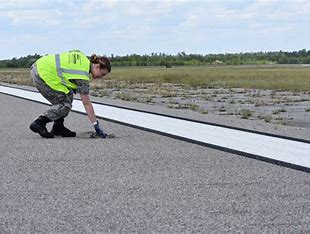Airports
Best Practices for Reporting FOD Incidents
Reporting Foreign Object Damage (FOD) incidents is crucial to maintaining the safety and integrity of airports. FOD refers to foreign object debris that can potentially harm aircraft, equipment, or airport infrastructure. By promptly reporting FOD incidents, airport personnel can take proactive measures to prevent accidents and mitigate risks. So what should you do if you find FOD? This article will explore the best practices for reporting FOD incidents, using information from reputable sources such as the Federal Aviation Administration (FAA), National Aeronautics and Space Administration (NASA), and the Civil Aviation Authority (CAA).
Suggested Resources
Check out our articles on How to Prevent FOD at Your Airport or How to Set Up a FOD Program for more great ideas.
The Importance of Reporting FOD Incidents
Reporting FOD incidents plays a vital role in maintaining airport safety. By promptly reporting FOD, airports can:
- Identify potential hazards and remove debris to prevent damage to aircraft and equipment.
- Analyze incident reports to understand patterns and implement preventive measures.
- Maintain a culture of safety and accountability within the airport community.
Best Practices for Reporting FOD Incidents
To ensure effective reporting of FOD incidents, the following best practices should be followed:
1. Familiarize Yourself with Reporting Guidelines
Before reporting a FOD incident, it is essential to familiarize yourself with the specific reporting guidelines and processes in place at your airport. The FAA provides comprehensive guidelines in their advisory circular [1] which outline the reporting requirements and procedures. Knowing these guidelines will ensure that you report the incident accurately and in accordance with established protocols.
2. Recognize and Document FOD
If you come across any foreign objects or debris on or around the airport premises, it is crucial to recognize and document them. Take the following steps:
- Observe the FOD carefully and note its location.
- If safe to do so, take photographs or videos to provide visual evidence of the FOD.
- Document any relevant details such as the size, shape, material, and any identifying marks on the debris.

3. Use the Proper Reporting Channels
Each airport may have its designated reporting channels for FOD incidents. It is essential to use the appropriate airport incident reporting method to ensure that it reaches the appropriate personnel. Some common reporting methods include:
- Contact the airport operations center or control tower directly.
- Using online reporting forms provided by the airport or regulatory authorities.
4. Provide Accurate and Detailed Information
When reporting a FOD incident, make sure to provide accurate and detailed information to facilitate swift action. Include the following information whenever possible:
- Date and time of the incident.
- Description and nature of the FOD.
- Precise location of the FOD.
- Any potential hazards associated with the FOD.
- Your contact information for follow-up communication.
5. Follow Up on the Reported Incident
After reporting a FOD incident, it is essential to follow up on the progress and actions taken. This ensures that the airport incident report receives appropriate attention and resolution. If possible, request feedback or a status update on the incident to ensure that it has been addressed effectively.
6. Access FOD Reporting Resources
Various organizations provide valuable resources for reporting FOD incidents. Here are some useful sources:
- The FAA’s FOD website [2] offers information and resources for FOD prevention and reporting.
- The National Aerospace Foreign Object Debris/Prevention Information (NAFPI) [3] provides a comprehensive FOD prevention guideline that includes reporting practices.
- NASA’s MSFC-STD-3598D standard [4] offers detailed guidance for FOD reporting and control procedures.
7. Utilize FOD Report Templates
FOD airport incident report templates can simplify the reporting process and ensure that all essential information is included. FOD Control [5] offers downloadable report templates that can be useful for documenting FOD incidents accurately. These templates can be adapted to meet the specific requirements of your airport.
Reporting FOD with the CAA MOR System
For operators in the United Kingdom, the CAA’s Mandatory Occurrence Reporting (MOR) system [6] provides a framework for reporting FOD incidents. Through this system, you can report FOD events and contribute to safety-related information for the aviation industry.
Conclusion
Reporting incidents and understanding what you should do if you find FOD is a vital responsibility for everyone involved in aviation operations. By following best practices and using the available resources, airport personnel can support a culture of safety and contribute to the prevention of FOD incidents. Remember to familiarize yourself with reporting guidelines, document FOD accurately, use proper reporting channels, provide detailed information, follow up on incidents, and utilize available reporting resources and templates. By working together to report FOD incidents promptly and effectively, we can ensure safer airports for all. Meilleur site de pokie plinko
Note: The information provided in this article is for informational purposes only. Please refer to the official guidelines and procedures of your airport or regulatory authorities for specific reporting requirements.
Resources:
- Advisory Circular 150/5210-24 – Airport Foreign Object Debris (FOD) Detection Equipment
- FAA FOD Website
- NAFPI FOD Prevention Guideline
- NASA MSFC-STD-3598D Standard
- FOD Control – FOD Forms and Templates
- CAA Mandatory Occurrence Reporting (MOR) System

